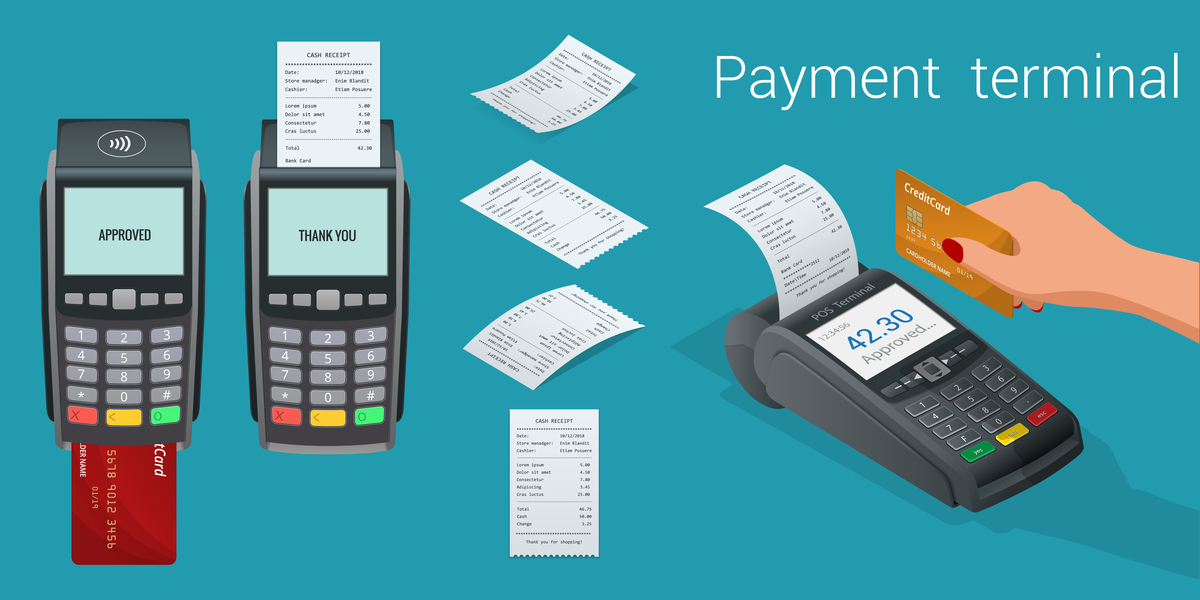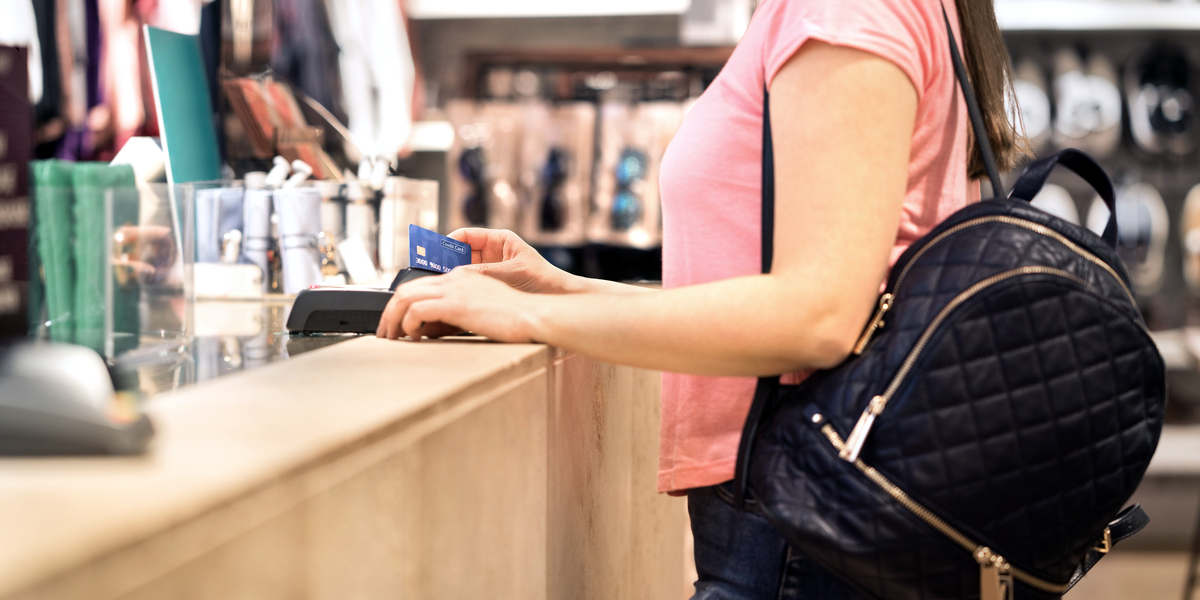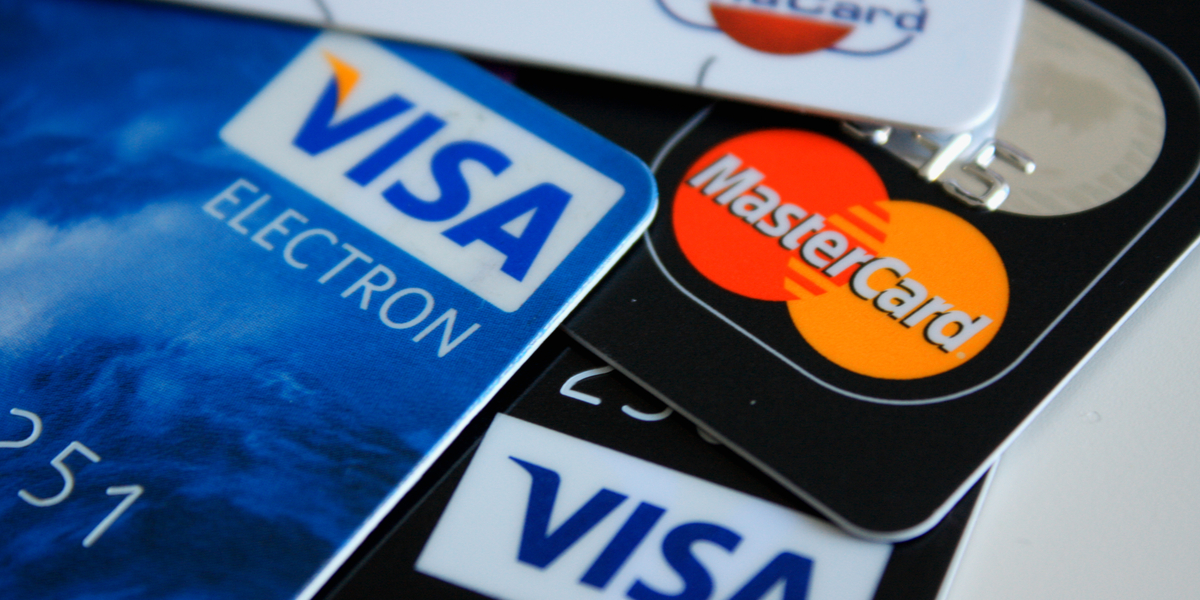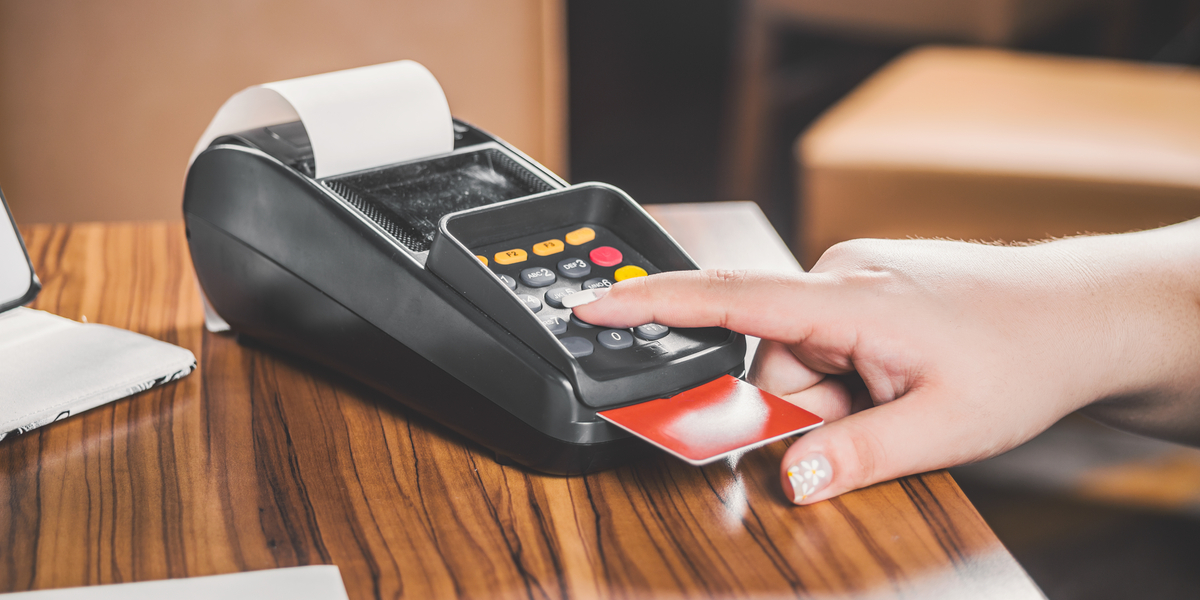"Do you take card?" you nervously enquire, knowing fine well that the £1 coin that's lived in your jacket pocket for 6 months won’t get you very far. Thankfully, these days the answer is most likely “yes.”
It's hardly shocking that debit card transactions have reigned supreme as the king of UK payments for a few years now. As a result of the Coronavirus pandemic, it’s probably not surprising to learn that even credit card spending has overtaken good old fashioned cash in payment popularity.
If you want custom in 2020, it's critical your business has the ability to accept both debit and credit card payments. The best way to do this is by introducing some chip and PIN solutions to your business.
Chip and PIN isn’t the only payment option for your business though. You can pick from a range of different payment methods that best suit your business model and needs.
What's so special about chip and PIN?
Chip and PIN payments are familiar to us all - you simply pop your card into the ATM machine or a point-of-sale (POS) payment terminal and enter your 4-digit Personal Identification Number (PIN Number).
While the contactless payments are becoming more and more popular, they currently have a £45 limit, so chip and PIN is still a necessity.
Of course, this isn’t the only way to process a card payment. Old school card machines use a slightly different authentication and verification method.
On these terminals, the card has to be swiped, using the magnetic stripe, or “mag stripe” to process the payment. The customer then needs to sign for this and you must keep a record of the receipts.
In the payment industry, this is known as a chip-and-signature payment, which is far more common in the United States then it is in the UK..
However, there's a reason why this payment method is becoming a thing of the past for cardholders. Here's why you're much better off with a chip and PIN solution:
- It's much faster: There are far fewer steps with chip and PIN. The customer trying and failing to swipe the card at the checkout, eventually getting there, printing a receipt, getting the customer to sign, realising your pen doesn't work, fumbling around for a working one... and so on. Both magnetic stripe, signature cards and machines are tedious. With chip and PIN, the transaction is completed in seconds. This will save you and your customer some valuable time.
- It's safer for the customer: If your customer has dropped their card on a sticky nightclub floor, there's a chance someone could rack up some hefty bills in their name. This is much harder with a chip and PIN card. As the fraudster won't know the PIN, there's less chance that you’ll be stuck in the middle of credit card fraud.
Chip and PIN payment technology - How does it work?
Chip and PIN technology - otherwise known as EMV - was introduced in 1996 by three powerhouse names in the payment industry.
EMV is abbreviated to represent Europay, Mastercard and Visa - the three organisations who teamed up to develop the first tech specs for chip and PIN cards aka EMV cards. Once the technology started to gain popularity, EMV cards subsequently expanded into an EMVCo empire.
EMV chip cards connect with EMV chip and PIN systems, so when a customer inserts their debit or credit card, the microchip on the card, and the machine taking the payment communicate with one another to authenticate the payment.
Once the authentication process is complete, online processing commences. This involves the transaction data being sent your merchant account, which is where all payments are checked and approved by the cardholder’s bank.
It doesn’t matter whether you’re sliding your card into a more traditional pdq machine or a slightly trendier card reader, the process remains the same.
Just like magnetic stripe cards, chip cards embed information about the cardholder’s account within the microchip such as the card number, card issuer, credit limit, available balance and transaction limits.
The functionality of the computer chip not only stores data, it processes it too. Through cryptography methods, the chip is also able to protect the cardholders secure data while communicating with the payment terminal.
Does this have you wondering how does contactless work? Contactless payments are a different kettle of fish, so if you’d like to know more it’s well worth checking out our in-depth article!
What are the different types of chip and PIN solutions?
Chip and PIN devices, broadly speaking, come in 3 variations:
Countertop Terminals: This is a chip and PIN machine that is integrated into an electronic point of sale (so it can't be used as a standalone system). These terminals typically connect directly to your internet router via WiFi. Minimum card payments may apply to these countertop terminals.
Portable terminals: These are the chip and PIN terminals you will have used to pay your restaurant bills. These machines work through Bluetooth or Wifi, which enables service industry workers to unplug the machine from the base unit to take it over to the customer's table.
Mobile card readers: This device differs from the portable terminal in that it doesn't actually have a base unit. Lightweight and with great battery life, these mobile terminals are ideal for small businesses that operate on the move, such as tradesmen and street traders. How do card readers work, though? Our insightful article covers all bases in that regard. Alternatively, If you fancy having a scan through some of the markets top card reader apps, our detailed article is great for narrowing down your options.
So before you pick up a card machine, you ought to make sure you buy the right type for your business. For instance, if you run a restaurant and don't have a portable terminal, it's going to increase the length of time between your customer paying up and freeing the table for another customer, which can reduce your turnover.

What should I look for in a card machine?
While going shopping for a new card machine isn't quite as exciting as picking up your new state-of-the-art iPhone or Android device, it's still worth doing your research. You should consider a couple of things:
The cards your customers use: While Visa and MasterCard are pretty much universally accepted, cards like American Express often aren't. Make sure the machine you're looking at accepts all debit and credit cards.
Quality of life: Each device isn't created equal, and you get what you pay for. Like mobile phones, each machine has different specs. Some are faster than others, are easier to use, and might have a bigger screen/buttons. While most of your customers probably won't care about the machine, some (perhaps someone elderly with poor sight) might appreciate a more upmarket and easy to use machine.
Added features: These can include things like accepting contactless mobile payments, cashback offers, and mobile top-up capability. This makes a customer more likely to rely on you for different services and increases your sales.
Where do I get a chip and PIN machine?
A chip and PIN machine is typically given to your merchant services provider when you open an account. This is the easiest way to get your hands on a machine, as you need to sign up for a merchant account to accept card payments anyway.
There are lots of different companies that will do this for you, such as Valitor. It’s always worth contacting competitors to get a free quote and see who best fits your budget.
That being said, you’re not stuck with the terminal your merchant services company gives you. You can buy your own if you wish.
CardSwitcher also offers affiliate links for many of the mPOS devices that have been mentioned. Be sure to check them out for a brilliant deal!
Summary
A chip and PIN solution is essential for any modern business that doesn’t want to limit the amount of people they can sell to.
Thankfully, it’s never been easier to set up a merchant account and get yourself up and running with chip and PIN, no matter what size your business is.
If you’re ready to save up to 40% on your credit card processing fees, be sure to try out our card processing fee comparison tool.






